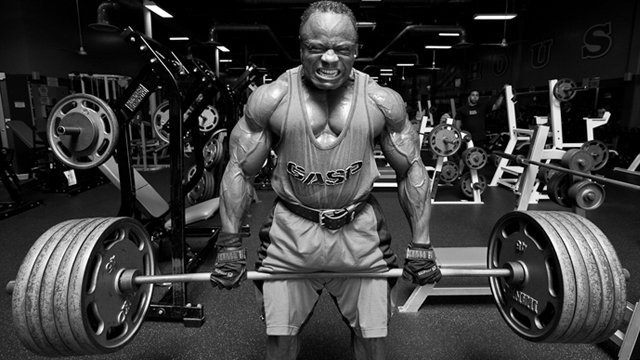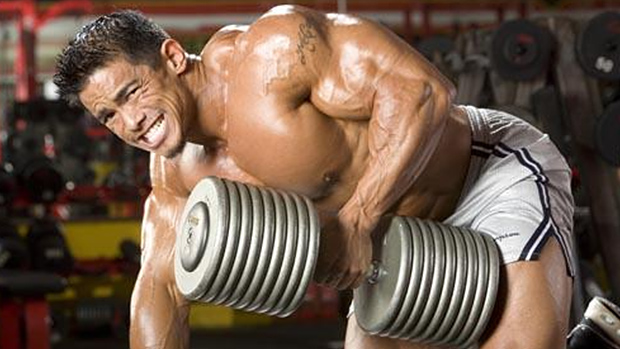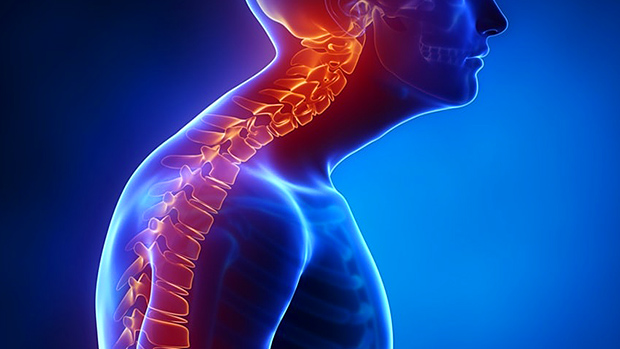Everyone has a man-crush on deadlifts these days. While ten years ago it was articles on bench presses and biceps curls that ruled the bandwidth, now every thing you read is extolling the virtues of heavy pulling.
I have to confess, I'm skeptical. How many of these zealots truly understand and appreciates the benefits of deadlifting as opposed to just trying to look like one of the cool kids?
To that end, one of my favorite questions to ask coaches and lifters who wear their love of deadlifting on their sleeves is, "Why do you deadlift?"
I always learn a lot from the responses – from both the very smart coaches that deadlift for the right reasons and from the misguided souls who shouldn't be deadlifting at all!
Reason #1: Deadlifting Makes Me Strong
Many use the deadlift as their measure of strength. However it's important to first define what "strength" is.
For the typical gym rat, strength is usually load-based, or simply how much weight they can lift. In this context, the deadlift makes perfect sense, as it's a stable, predictable, and easy to groove movement.
But in athletics it isn't nearly as cut and dried. How many times have we seen wrestlers, gymnasts, martial artists, etc., that are strong in their chosen sport, yet can't pull to save their lives?
To that end, if you're strong in your sport and dominating the competition, does your deadlifting prowess even matter?
Before we can establish a correlation of strength to a given activity, we need to assess how accurately it challenges our body in specific measures relevant to that activity. The problem with using the deadlift is that it's easy to mask and compensate for deficiencies in many areas. Therefore, we must question if it's truly an accurate measure of "functional" strength, which brings us to reason number two.
Reason #2: Deadlifting is Very Functional

Coaches often say the deadlift carries over to many daily functions. The truth of the matter is that the deadlift has many holes in its translation to most sporting and daily functions.
The deadlift, while a free weight movement, is movement in only one dominant plane, sagittal. However, most daily and sporting activities require us to move and stabilize in many planes of motion.
Furthermore, according to back expert Stuart McGill, the majority of low back issues are not due to maximal strength issues, but rather poor strength-endurance and bad motor patterns. Because the deadlift is such a stable and grooved exercise, it's easy to build compensation patterns that could actually be detrimental to our low back health.
Finally, concerning sporting performance, legendary biomechanics expert and one of the first U.S. coaches to spend time with Soviet sport coaches, Dr. Michael Yessis, states that the Russians found two main causes of injury:
- Extreme range of motion
- Eccentric load
Leaning too hard on the deadlift for "sport performance training" can be misleading as neither of these two variables are addressed. Fact is, many coaches remove the eccentric component of the deadlift altogether.
Reason #3: It Works the Posterior Chain
The synergy of the hamstrings, glutes, and low back to produce power and strength is an extremely important component to many sports. Yet there are many ways to accomplish this other than just performing deadlifts.
The basic hip hinge component of deadlifting is vital to learn for both performance and low back health. But as we continue to add load, this basic point of deadlifting could be potentially lost.
The term "optimal strength" refers to the point in loading where the chosen lift ceases to provide a carryover to the performance goal.
This is extremely important when training athletes as trying to make an athlete go from a 450-pound deadlift to 500 pounds may come at a significant cost to their movement skills, but have little benefit to their performance.
For the non-powerlifting lifter, the same decisions need to be made in programming. Can we get the same or similar effect but with less spinal compressive movements?
Reason #4: I Like Lifting Heavy Stuff
I won't argue this point – heck, it's fun to lift big loads off the ground. I used to enjoy it as well, but I noticed that the heavier my loads got, the more time I had to spend warming-up, pre-habbing, doing corrective exericse, etc. It seemed as though more time was spent preparing and healing from the lift than actually training.
As a coach it can be a trap to make our clients perform the methods and drills we love to do ourselves. Yet if we start to look at our programs with a critical eye, we may be able to develop far more effective programs and still move well and be strong!
What Do I Do?

The deadlift can serve as a great base for teaching the hip hinge and developing some general strength. However, we should look to progress after we establish these patterns at appropriate loads. Progressing doesn't mean loading the deadlift to Elite proportions, but moving to more complex patterns of movement, speed, and body position.
The Influence of Single-Leg Training
I know, no one ever wants to wear the "90-pound dumbbell single-leg deadlift club" T-shirt, but these movements may take your training and performance further than joining the 600-pound deadlift club.
At a certain point the bilateral lifts have diminishing returns. As loads get heavier, shearing forces and spinal compression diminish movement quality, not to mention increase the risk of injury. This is where single-limb movements start to really shine.
Interestingly, here the benefits of single-leg training have little to do with promoting "symmetry" but rather providing a form of asymmetrical loading.
Asymmetrical loading exercises effectively train trunk and spinal stability. As McGill notes, "Though the spine remains upright, it's subject to enormous compressive, bending, twisting, and shearing loads."
While we're seeing some of these drills appear in more training programs, their versatility, progression, and complexity have yet to be maximized. The following exercises are a very good start. (I've also included a video at the end of the descriptions that shows how to do each of these movements.)
Suitcase Barbell Deadlift from Paused Reverse Lunge
Performance Keys:
Stand beside a loaded barbell in a lunge position with the leading knee down. Make sure the barbell is loaded so that it's off the ground – you don't want to lean over to pick it up.
Maintaining an upright posture, drive through the lead foot and accelerate to a full lockout position. When coming down, make a smooth transition back to the ground and pause for a two-count to remove momentum.
No forward lean of the trunk should take place during the upward phase.
Note: Kettlebells may work better in some situations as the handle will place the weight higher up. If using a dumbbell, you may have to use a step underneath the weight.
Progressions:
Off-set loading – To progress, add load to the barbell; that'll greatly challenge lateral stability, or pick up another weight on the lead-leg side and hold it overhead. This will also add another stability component because of the placement of the load.
Staggered Deadlift
Performance Keys:
This movement can be done with a dumbbell or barbell. I recommended you begin with dumbbells to learn the groove of the movement.
Assume the deadlift position but slide one foot back so the toes of the rear foot are in line with the heel of the front foot. This challenges the lead leg side while still providing enough stability to develop force at appreciable loads.
Hinge back, keeping the heel of the back foot elevated as this foot primarily serves as a balance leg. The acceleration will occur with a push through the ground with the lead leg. Attention needs to be paid to upper back position throughout the movement.
Progressions:
Reducing stability – Increasing load is an option, but slowly decreasing stability is an overlooked choice. Raising the foot onto a small platform and gradually increasing the height reduces the effectiveness of the "stability" leg to assist in the movement.
As stability decreases, choose some other lifting implement instead of the barbell in case dumping the weights becomes an option.
Zercher Good Mornings

Performance Keys:
The Zercher good morning will change the load position and greatly challenge the upper back. Since this is the first place most lifters tend to compensate, it's a great exercise for spine health.
It's important to keep the shoulders "down and back" even when descending, as the weight will want to pull the upper back forward. The Zercher good morning is also a very powerful anti-flexion trunk exercise.
Progressions:
Increase hip drive – A simple way to increase hip drive is to loop a super band around the barbell and to an object in front of the lifter. This will force the lifter to press through the ground and fully extend the hips.
Single Leg Dumbbell Snatch
Performance Keys:
Hold the dumbbell on the opposing side of the stance leg. Kick the off leg back, keeping it straight to maintain balance and stability.
Keep the arm holding the dumbbell packed and drive through the stance leg to accelerate the weight overhead.
Coming down, hinge at the hips and continue to drive the off leg back to absorb the force of the weight coming down.
Progressions:
Reducing stability – If this variation is too difficult, try starting from a staggered stance, progressing to rear-foot slightly elevated, until the final variation of pure single-leg stance is achievable.
Here's a video that demonstrates each of the above movements:
Did You Try Them?
I hope that you'll try some if not all of these lifts before forming your opinion. In my case, implementing and prioritizing these lifts was some of the most humbling training I've ever performed, but also the most rewarding.
In the end, I'm not asking you drop your deadlifts – I'm asking that you execute good programming, starting with cycling movements and determining if deadlifts are even the answer to your training goals.
Remember, the really cool kids aren't the ones hitting deadlift PR's – they're the ones achieving their training goals.




